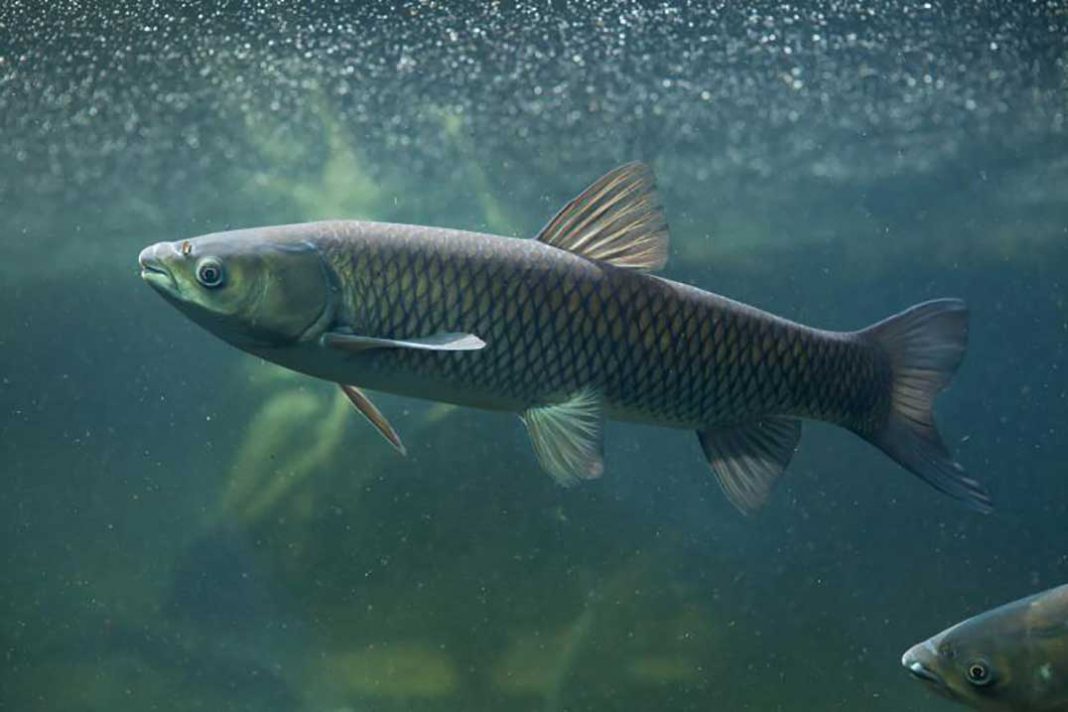SAULT STE. MARIE – Representatives of the Invasive Species Centre (ISC) in Sault Ste. Marie, Ontario are requesting the public’s help if they see or locate Asian carp in the Great Lakes.
This request came out of an information session hosted by the ISC in Point Pelee last week, held to educate the public about Asian carp and other species of carp and their growing threat to the Great Lakes. The ISC is requesting that that commercial fishermen, anglers, cottage owners and boaters actively search for Asian carp while out on Great Lakes waterways.
Becky Cudmore, regional manager of the Aquatic Invasive Species Program at Fisheries and Oceans Canada (DFO), told CBC News August 20 that Asian carp are an imminent threat and that everyone’s help is needed to shut them out. It was reported that 30 Asian carp have been found since 2005 in the Great Lakes, and if they establish in the Great Lakes it would have devastating effects on the fishery and economy.
“This is all the result of an information session we hosted last week in Point Pelee,” Rebecca Schroeder at the ISC told the Recorder. “We host two similar information sessions every year in the Great Lakes basin on the Canadian side. We picked Point Pelee (for this meeting) because currently, Lake Erie is the most vulnerable for carp, especially for grass carp.” However, she said, “all the Great Lakes are at risk for carp invasion, including Lake Huron.”
Ms. Schroeder emphasized, “Fisheries and Oceans does extensive monitoring for carp and have found no established populations of carp (in the Great Lakes), which is good news.” However, “as Becky (Cudmore) said at the meeting, if we could, we would have people out on the lakes 24/7 but this can’t possibly be done, so we would like commercial fishermen, anglers, cottage owners and boaters to watch for them and if they see any carp of any kind to report them.”
“Currently it is grass carp that are the most imminent threat and we are asking anyone if they are on the water and see them to report them as it would be really helpful,” said Ms. Schroeder. Ms. Schroeder noted that all four types of carp, including Asian carp, black, silver and bighead carp are illegal to catch or possess in Canada. Each of the four species, which have been stocked in the US as environmental control measures, have different diets. Asian carp eat aquatic vegetation so they are used for weed control in the US, black carp are stocked to control snails, and bighead and silver carp are used to control algae and eat plankton.
For more information on what the carp eat, what they look like, identifying features and more, visit the ISC website at AsianCarp.ca.
If Asian carp make it into the Great Lakes, the DFO has indicated “These four species of carp, if they get into the Great Lakes, would have serious economic and ecological effects. They are a huge threat in the US and in Canada, in all the Great Lakes,” said Ms. Schroeder. If you see any species of carp, report the sighting to the Ministry of Natural Resources and Forestry, the ISC or DFO.
Asian carp are dangerous because they outcompete native species and decimate their food supply. They consume up to 40 percent of their body weight each day, can grow more than 25 centimetres in their first year, can weigh up to 40 kilograms and be more than one metre long. As well, they reproduce rapidly.





